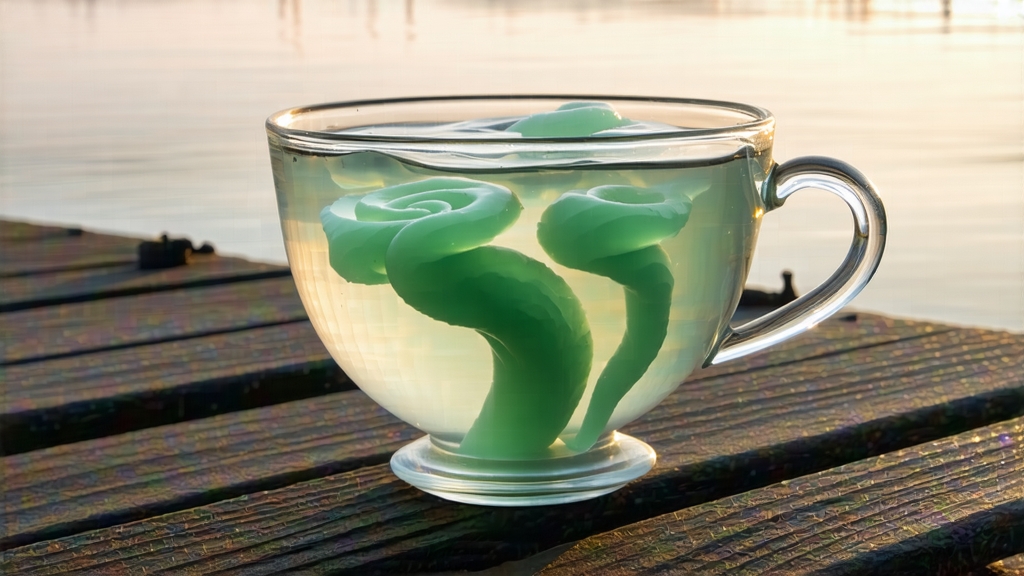
Among the emerald spectrum of Chinese green teas, none carries the lake-born perfume and snail-shell delicacy of Biluochun. Originally named “Xia Sha Ren Xiang” (“Scary-Fragrant” by Qing court ladies who feared the perfume was sorcery), this spring-tip tea was later christened Biluochun—“Green Snail of Spring”—by the Kangxi Emperor in 1699 after he saw the tiny spirals dance in his white porcelain cup. For three centuries the tea has been inseparable from the misty, fruit-blossom shores of Dongting Mountain in Taihu Lake, Jiangsu Province, where peach, plum and loquat trees intercrop with tea bushes, letting the dormant buds absorb floral volatiles through winter.
True Biluochun is not a generic style but a protected-origin product limited to the two Dongting isles—Dongshan and Xishan—where acidic, quartz-sand soil and 70 % year-round humidity create a natural “small fog greenhouse.” Within this micro-zone, three sub-cultivars dominate: the local “Small-Leaf Dongting,” the late-budding “Dongshan Spiral,” and the rare purple-shoot “Zijuan Biluochun,” each contributing different amino-acid ratios and aromatics. Picking begins when the lake’s morning dew is still cold, usually between the Qingming and Grain Rain solar terms (early April). Only one unopened bud plus the adjacent half-expanded leaf is plucked; 70 000 such sets yield one kilogram of finished tea.
The craft is a duet of heat and hand. Within minutes of plucking, the fragile tips are spread 3 cm thick on bamboo trays to wither for 90 minutes, driving off grassy aldehydes. They are then pan-fired on three sequential woks whose temperatures read like a musical scale: 180 °C for killing-green (three minutes), 130 °C for rolling (ten minutes), and 80 °C for final shaping (twenty minutes). The last stage is the signature spiral: the master presses a palmful of almost-dry leaves against the wok wall with a duck-down cloth, simultaneously rubbing and circling until each bud curls into a downy snail shell. A single craftsman completes only 250 g per hour; the aroma at this moment is so intense that neighboring villagers can time their lunch by it.
To brew Biluochun abroad, choose a tall, clear glass or a 150 ml gaiwan; transparency lets the foreign drinker watch the “one-flag-one-shot” ballet—each bud stands upright, then slowly sinks, tip first, like a green comet. Use 3 g of leaf (about two teaspoons) for 200 ml of water cooled to 75 °C; hotter temperatures polymerize the tender chlorophyll, muting the apricot-like sweetness. First infusion: 45 seconds, no lid, to release the top-note of peach blossom. Second: 25 seconds, lid slightly ajar, coaxing out baby-corn umami. Third: 40 seconds, lid closed, revealing a lingering cool-mint finish. A fourth infusion is still possible if the spirals were tightly crafted; simply add ten seconds each round.
Tasting Biluochun is olfactory time-travel. Bring the cup to chin level, inhale through nose and mouth simultaneously; the dominant molecule is (Z)-3-hexenyl acetate, identical to the scent of crushed peach leaves. Sip with lips half open, aspirating the liquor so it mists the soft palate; look for three waves—first, bright asparagus; second, steamed edamame; third, sweet cream reminiscent of Thai coconut. Professional cuppers in Suzhou score the tea on five metrics: spiral tightness (≥ 90 % unbroken curls), white down density (≥ 9 000 trichomes per gram), infusion clarity (LT 90 on the Lovibond scale), aroma persistence (≥ 70 % intensity after third brew), and leaf-bottom tenderness (no fibrous stems when rubbed). A top-grade batch will keep its bouquet for eighteen months if stored in an unopened tin at –5 °C with 50 % relative humidity.
Beyond the cup, Biluochun has become a cultural ambassador. Every April the Dongshan Peninsula hosts the “Spiral Festival” where foreign tea students hand-fire 50 g under the tutelage of provincial inheritors; the finished micro-batch is sealed in silk pouches